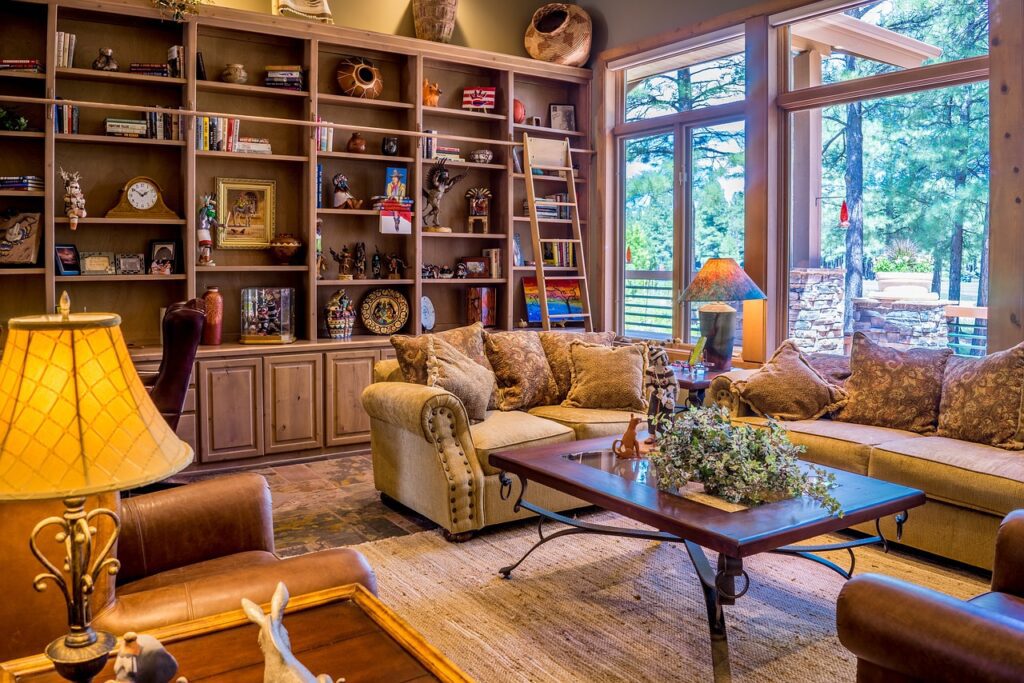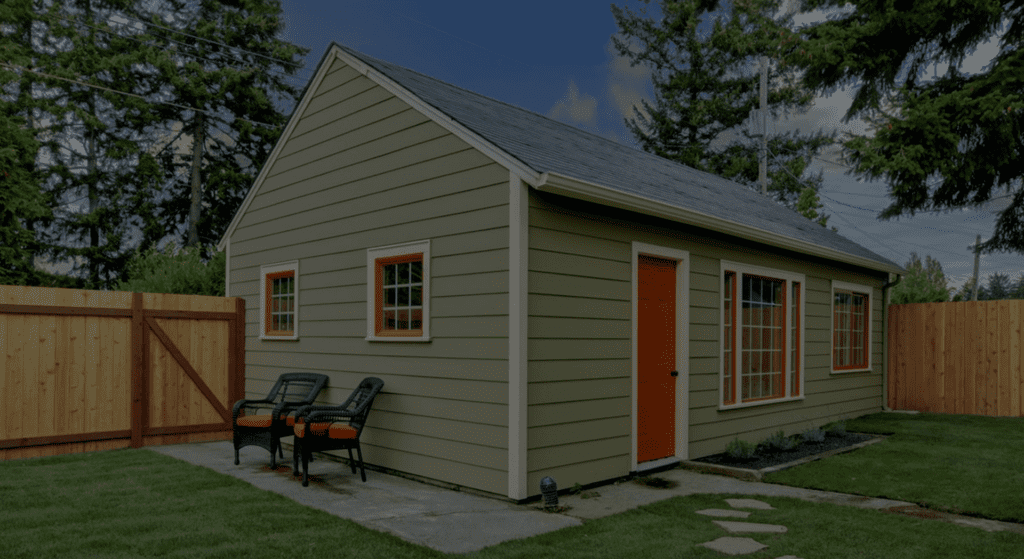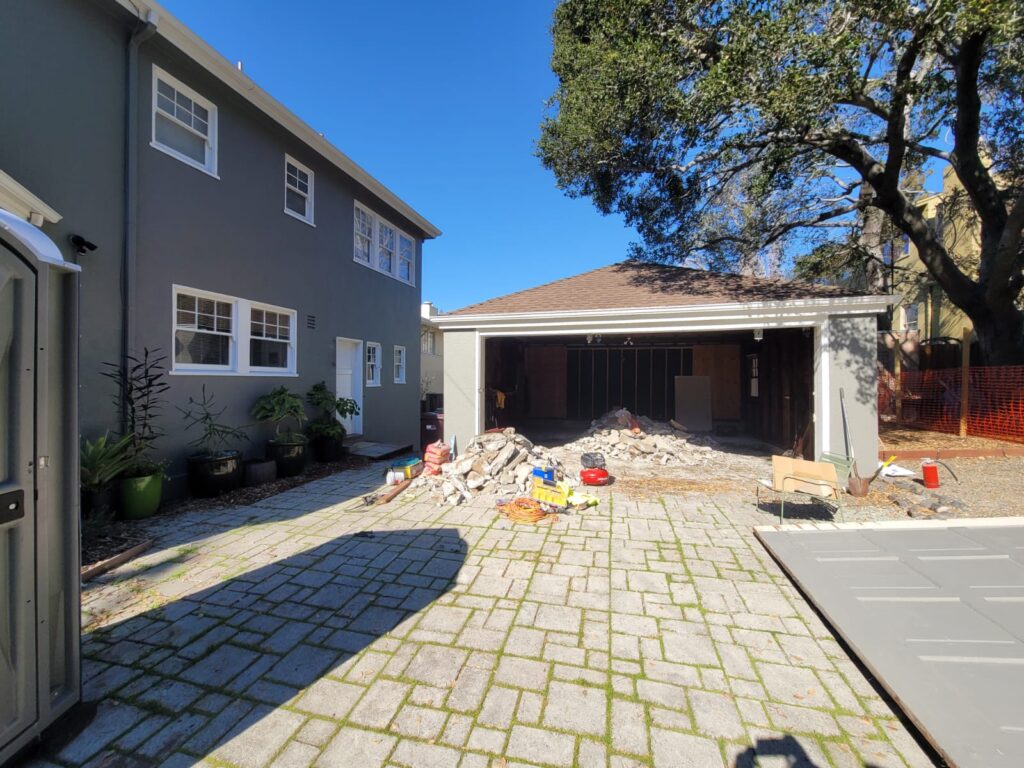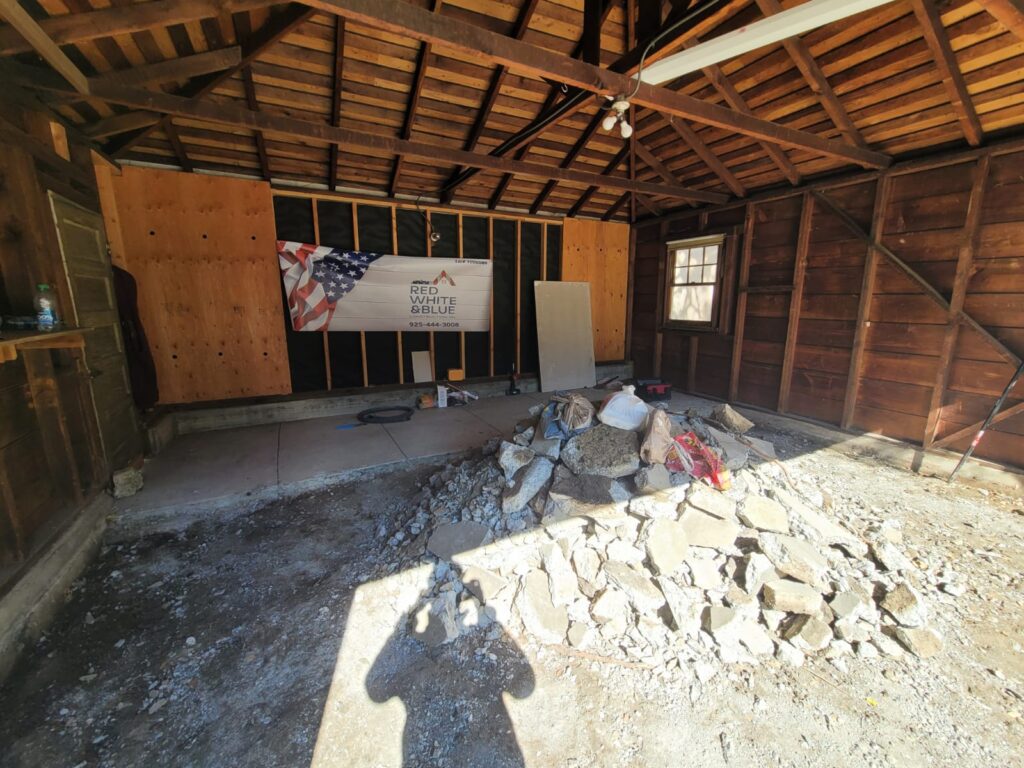Ever wondered how granny flats transformed into trendy backyard cottages? The evolution of detached ADUs has revolutionized living spaces. From humble beginnings to stylish retreats, these structures offer versatility and functionality. Discover the journey from traditional to modern, where creativity meets practicality. How have these compact dwellings adapted to our changing lifestyles? Explore the fascinating transition that has made detached ADUs a sought-after living solution. Join us as we delve into the intriguing evolution of granny flats into contemporary backyard cottages.
Brief History of ADUs
Early Granny Flats
Early granny flats were small living spaces designed for accommodating family members. They served as affordable housing options within family properties, promoting closeness and convenience. These units held cultural significance by nurturing strong familial bonds and support networks.
Mid-20th Century Changes
The mid-20th century witnessed a shift towards single-family homes, leading to the decline of diverse housing types like granny flats. Post-war housing policies played a crucial role in popularizing standalone homes over accessory dwelling units. Societal changes during this period altered perceptions of multi-generational living, impacting the demand for detached ADUs.
Modern Backyard Cottages
Contemporary backyard cottages are characterized by their stylish and functional design, catering to homeowners seeking extra living space. These structures appeal to individuals looking to expand their homes without extensive renovations. The latest design trends focus on sustainability and aesthetics, reflecting a growing interest in eco-friendly and visually appealing modern cottages.
Evolution of ADUs
Societal Influences
Changing Family Dynamics: As families evolve, many ADUs have become popular due to the need for additional living spaces. Multigenerational households seek privacy while staying connected.
Urbanization Impact: The trend of urbanization has fueled the rise of ADUs, offering affordable housing options in densely populated areas. Backyard cottages address space constraints.
Community Acceptance: Community support plays a crucial role in the development of ADUs. Positive attitudes towards detached living units encourage homeowners to invest in these structures.
Technological Advances
Innovations in construction technology have revolutionized ADU building processes, making them quicker and more cost-effective. Prefabricated components streamline construction timelines.
Sustainable materials and energy-efficient designs are now integral to modern ADUs, promoting eco-friendly living practices. Features like solar panels reduce energy consumption and environmental impact.
Smart home technology integration enhances the functionality of backyard cottages by providing automation and security features. Residents can control lighting, temperature, and security systems remotely.
Policy Shifts
Recent legislative changes have relaxed zoning regulations to promote ADU construction, addressing housing shortages. These shifts allow homeowners to maximize property use and generate rental income.
Local governments play a crucial role in facilitating the development of ADUs by providing guidance on permits and construction requirements. Streamlined processes encourage more homeowners to build these units.
Policy shifts aimed at diversifying housing options have gained traction, promoting inclusivity and affordability in real estate markets. By supporting ADU construction, policymakers address the growing demand for flexible living arrangements.
Purpose of ADUs
Housing Shortages
The growing crisis of housing affordability in urban areas is a pressing issue. Urbanization has led to an increased demand for housing, creating shortages. ADUs play a crucial role in alleviating pressure on the housing market by increasing supply. They offer an immediate solution to housing shortages by providing additional living spaces within existing properties.
Property Value
Adding an ADU can significantly increase the overall value of a property. Homeowners who invest in building ADUs can expect a positive return on investment. Market trends show a rising preference for properties with additional living units, indicating their potential to enhance property values.
Flexible Living
Flexible living involves adapting spaces to cater to various needs and lifestyles. ADUs offer homeowners the flexibility to utilize the space as home offices, guest suites, or rental units. With the growing trend of remote work, ADUs provide a practical solution for accommodating changing living arrangements based on individual preferences and requirements.
Benefits of Detached ADUs
Affordable Housing
Detached ADUs play a crucial role in addressing the pressing issue of affordable housing in high-demand urban areas. By providing additional living spaces on existing properties, homeowners can contribute to easing the housing shortage. These units offer an affordable housing option for low-income families and individuals who struggle to find suitable accommodation in competitive real estate markets. Government incentives, such as reduced permit fees and tax incentives, encourage homeowners to invest in building ADUs, thereby expanding affordable housing options.
Multi-Generational Living
Detached ADUs enable multi-generational living arrangements, fostering closer family bonds while allowing each generation to maintain their privacy. Families can live together while enjoying separate living spaces, ensuring harmony and independence within the household. This trend reflects a cultural shift towards embracing extended family living, where grandparents, parents, and children reside in close proximity. ADUs provide a practical solution for accommodating multiple generations under one roof.
Rental Income
Renting out detached ADUs presents homeowners with a lucrative financial opportunity. By listing these units on rental platforms like Airbnb, homeowners can generate additional income streams to offset mortgage payments and cover living expenses. The growing popularity of short-term rentals has made ADUs even more attractive for homeowners looking to maximize their property’s earning potential. The flexibility of renting out ADUs allows homeowners to adapt to changing financial needs and market demands.
Current Trends in ADUs
Sustainable Building
Building ADUs with sustainable practices offers significant environmental benefits. Smaller living spaces in ADUs lead to reduced resource consumption and lower energy use. This contributes to a more sustainable lifestyle and aligns with green building principles.
- Reduced carbon footprint
- Energy-efficient design
Incorporating sustainable features like solar panels and energy-efficient appliances can further enhance the eco-friendly nature of ADUs. By promoting sustainable building practices, ADUs play a crucial role in environmental conservation.
Innovative Designs
Innovative architectural designs play a key role in maximizing space within ADUs. These designs focus on space optimization and efficient layouts to ensure functionality. Aesthetics also play a crucial role in attracting potential renters or buyers to these units.
- Space-saving solutions
- Modern amenities
Creative features such as loft beds, built-in storage, and multi-functional furniture enhance the livability of ADUs. These innovative designs cater to the changing needs of residents and provide a comfortable living experience within limited space.
Urban Planning Acceptance
Urban planners are increasingly recognizing the value of ADUs in addressing housing challenges. The integration of ADUs into comprehensive city planning strategies allows for flexible housing options within urban areas. Successful case studies demonstrate how ADUs can be embraced as a solution to housing shortages.
- Affordable housing solutions
- Community integration
Addressing the Housing Crisis
The Missing Middle
“Missing middle” housing bridges the gap between single-family homes and large complexes, catering to diverse needs. ADUs offer affordable options for middle-income residents, promoting inclusivity in housing. Diverse housing types are vital for fostering vibrant communities with a mix of residents.
ADUs serve as a solution to urban density challenges by maximizing land use efficiency. They help increase urban density while preserving green spaces, striking a balance between development and environmental sustainability. Successful cities leverage ADUs to address housing shortages without compromising community aesthetics.
Urban Density Solutions
ADUs contribute significantly to urban density without sacrificing essential green areas. Cities benefit from increased housing options while maintaining their unique character. Notable cities like Portland and Seattle have successfully integrated ADUs into their urban landscapes, demonstrating effective density solutions.
Case Studies
- Portland, Oregon: Implemented ADU-friendly policies, resulting in increased housing options and community diversity.
- Los Angeles, California: Encouraged ADU construction, leading to improved rental affordability and enhanced property values.
- Austin, Texas: Witnessed positive impacts on neighborhood vitality and increased homeowner satisfaction through ADU projects.
Pros:
- Provides affordable housing options
- Enhances community diversity
- Maximizes land use efficiency
Cons:
- Regulatory challenges in some areas
- Potential impact on neighborhood aesthetics
Real-life examples showcase the positive outcomes of ADU projects, emphasizing community benefits and homeowner satisfaction. These projects have not only addressed housing shortages but also fostered stronger neighborhood connections. Lessons learned from successful case studies can guide future ADU developments towards sustainable growth.
California’s Leadership
Legislative Support
California has been at the forefront of ADU legislation with key bills like SB 13 and AB 68 streamlining the permitting process. These laws have removed barriers and provided clear guidelines for ADU construction. Advocacy groups such as AARP and Habitat for Humanity have played a crucial role in advocating for these policies. Their efforts have influenced policymakers to recognize the importance of ADUs in addressing housing shortages.
Legislative support is vital as it sets the foundation for increased ADU construction. By enacting laws that promote ADU development, local and state governments can encourage homeowners to invest in creating additional housing units. This not only boosts housing stock but also provides affordable living options for families and individuals.
Successful Implementations
Communities like Santa Cruz and Los Angeles have successfully integrated ADUs into their housing strategies. These implementations have led to a surge in rental income for homeowners and increased affordable housing options for renters. The positive impacts extend to local economies, with small businesses benefiting from the influx of residents.
Best practices from successful implementations include offering financial incentives for ADU construction, streamlining the permitting process, and providing resources for homeowners interested in building ADUs. These strategies have proven effective in replicating success stories in other regions facing housing challenges.
Future Plans
The future of ADUs lies in innovative design and sustainable construction practices. Emerging trends focus on eco-friendly materials, energy-efficient systems, and smart home technologies. These advancements not only enhance living spaces but also contribute to environmental conservation.
Zoning laws are evolving to accommodate the growing demand for ADUs, with potential changes allowing for more flexibility in unit sizes and configurations. By adapting regulations to align with current housing needs, communities can foster a diverse range of housing options while maintaining neighborhood aesthetics.
Community input remains crucial in shaping future ADU initiatives. Engaging residents in the planning process ensures that developments meet the specific needs of each neighborhood while fostering a sense of inclusivity and collaboration.
Design Considerations
Space Optimization
When designing ADUs, maximizing limited space is crucial. Utilize multifunctional furniture to optimize functionality and enhance usability. Incorporate smart layout ideas to make the most out of every square foot.
Consider the importance of outdoor spaces in ADU designs. Patios or balconies can extend living areas. Landscaped gardens create a serene environment, enhancing the overall living experience.
Aesthetic Appeal
Aesthetics play a significant role in making ADUs attractive living spaces. Focus on design elements that boost curb appeal to attract potential renters or buyers. Implement modern trends in landscaping and exterior design to complement the ADU’s overall look.
Enhance the visual appeal of ADUs through thoughtful design choices. From exterior finishes to interior decor, every detail contributes to creating a welcoming and visually appealing space.
Functional Layouts
Functional layouts are essential for maximizing livability in ADUs. Incorporate common design features like open floor plans and ample natural light to enhance space efficiency and comfort. Prioritize flow and accessibility to ensure a seamless living experience for residents.
Efficient use of space is key in ADU layouts. Consider incorporating storage solutions, such as built-in cabinets or hidden compartments, to maintain a clutter-free environment. Ensure that each area serves a specific purpose while maintaining a cohesive design throughout the ADU.
Legal Aspects
Zoning Laws
Restrictive zoning laws historically hindered ADU development, limiting housing options and affordability for many. Recent changes, however, have begun to support ADU construction by easing restrictions on size and occupancy. Ongoing advocacy efforts are crucial to reform outdated zoning policies and promote sustainable urban development.
Permitting Process
Homeowners navigating the permitting process for constructing an ADU often face a complex landscape of regulations and approvals. Understanding the steps involved, from submitting applications to inspections, is essential. Common challenges include lengthy approval times, costly fees, and compliance with building codes. Resources such as online guides, workshops, and consulting services can assist homeowners in streamlining the permitting process.
Financing Options
Various financing options exist for homeowners considering building ADUs, ranging from traditional loans to innovative programs like accessory dwelling unit loans. Government grants and subsidies play a significant role in easing financial burdens associated with ADU construction. Proper financial planning is crucial to ensure successful completion of ADU projects, taking into account construction costs, permits, and potential rental income.
Closing Thoughts
In understanding the evolution, purpose, benefits, current trends, and legal aspects of detached ADUs, you grasp their vital role in addressing the housing crisis. California’s strides in this field showcase leadership worth emulating. Design considerations are crucial for maximizing the potential of these living spaces. By delving into the history and exploring the possibilities they offer, you’re poised to make informed decisions regarding ADUs on your property. Consider the benefits they bring not just to homeowners but also to communities at large. Take action today by exploring how detached ADUs can enhance your living situation while contributing positively to the broader housing landscape.
Frequently Asked Questions
1. What is the historical background of ADUs?
ADUs have a rich history dating back to the early 20th century when they were commonly known as “granny flats” or “in-law suites.” These additional living units on residential properties have evolved over time to address changing housing needs.
2. How have ADUs evolved over time?
Originally used for accommodating extended family members, ADUs now serve various purposes such as rental income, home offices, or guest accommodations. They have transformed from simple backyard cottages to versatile living spaces with modern amenities.
3. What are the primary purposes of ADUs?
ADUs serve as flexible living spaces that can be used for rental income, multigenerational living arrangements, home offices, guest accommodations, or simply to increase property value and maximize space utility in urban areas.
4. What are the benefits of having detached ADUs?
Detached ADUs offer homeowners a source of rental income, increased property value, flexibility in housing options, privacy for both the main house residents and ADU occupants, and potential solutions to address housing shortages in crowded urban areas.
5. What are the current trends in ADUs?
Current trends in ADUs include a growing interest in sustainable and energy-efficient designs, modular construction techniques for faster installation, increased popularity in urban infill projects, and regulatory changes to promote ADU development as a solution to housing challenges.

Revitalize Your Property with Expert Detached ADU Installations by Red White & Blue Construction!
Dreaming of adding a stylish and functional detached accessory dwelling unit (ADU) to your property in Lafayette, CA? Red White & Blue Construction is here to make that dream a reality with our top-notch ADU installation services! Our team excels in detailed planning and precise execution, ensuring your detached ADU perfectly matches your vision. Specializing in detached ADU installations, we’re dedicated to enhancing your property with a modern, versatile living space. Our outstanding reputation throughout the Bay Area reflects our unwavering commitment to quality, precision, and excellence in every project phase.
At Red White & Blue Construction, we believe in enhancing more than just your property; we aim to elevate your entire home renovation experience. With meticulous planning, transparent pricing, and exceptional customer service, choosing us for your ADU installation means embarking on a seamless and enjoyable renovation journey. Let Red White & Blue Construction handle all your detached ADU needs and take the first step toward a more elegant and functional living space. Contact us today to get started!
Disclaimer
The materials available on this website are for informational and entertainment purposes only and not to provide advice. You should obtain advice concerning any particular issue or problem from a professional. You should not act or refrain from acting based on any content included in this site without seeking legal or other professional advice. The information presented on this website may reflect only some of the current building developments. No action should be taken in reliance on the information on this website. We disclaim all liability concerning actions taken or not taken based on any or all of the contents of this site to the fullest extent permitted by law.





